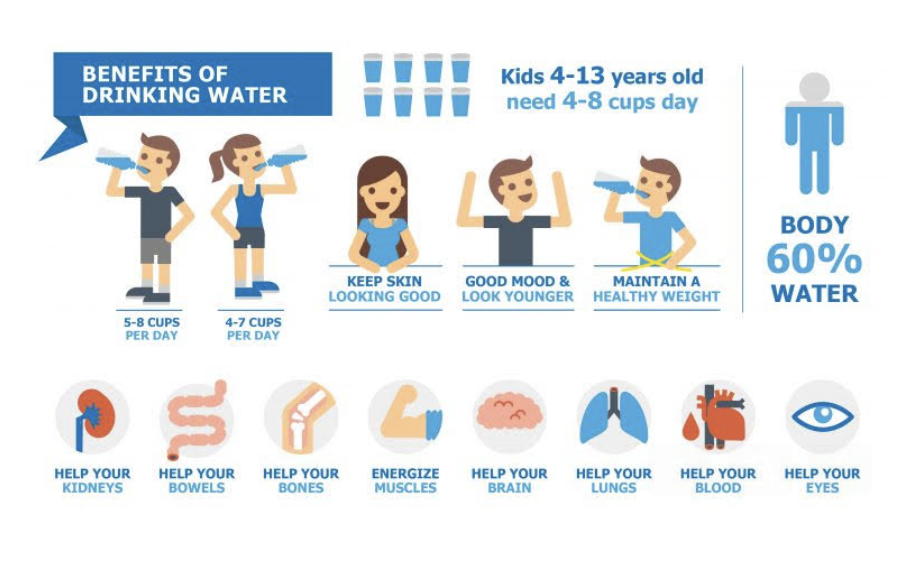 By UNMC, Central States Center for Agricultural Safety and Health, Omaha, NE
By UNMC, Central States Center for Agricultural Safety and Health, Omaha, NE
If your body overheats and heat exhaustion occurs, symptoms may include heavy sweating and a rapid pulse. The mildest sign of overheating is heat cramps; the most severe is heatstroke.
Your body’s heat combined with environmental heat results in core body temperature. Your body needs to regulate the heat gain, and in cold weather, heat loss, from the environment to maintain a normal core temperature, approximately 98.6.
Heat exhaustion may occur with exposure to high temperatures, especially when high humidity is a factor and physical activity is strenuous. Unless treatment is prompt, heatstroke is a life-threatening condition. Without immediate attention, damage to the brain and other vital organs and death may occur.
Factors that can increase vulnerability to heatstroke include sudden temperature changes and a high heat index. The heat index is a single temperature value that considers how both the outdoor temperatures and humidity may make you feel. When humidity is high, your sweat can’t evaporate as quickly, causing the body to have more difficulty cooling itself. When the heat index is 91 or higher, it’s necessary to take precautions to remain cool.
Medications that affect the body’s ability to stay hydrated and respond appropriately to heat include
• High blood pressure medication,
• Beta-blockers and diuretics,
• Antihistamines,
• Tranquilizers,
• Antipsychotics, and,
• Illegal drugs such as cocaine and amphetamines can increase core temperature.
Excess weight may also affect your body’s ability to regulate its temperature, causing it to retain more heat.
All the following symptoms can be indications of heat exhaustion, which may occur suddenly, cool, moist skin with goose bumps while exposed to high temperatures, heavy sweating, faintness, dizziness, fatigue, weak, rapid pulse, low blood pressure upon standing, muscle cramps, nausea and headache.
Additional symptoms may include confusion or agitation, loss of consciousness, or inability to drink liquids. If heat exhaustion is suspected, stop all activities and rest in a cool place. Drink cool water or sports drinks and contact a physician if symptoms worsen or don’t improve within one hour. Urgent medical attention is required if core body temperature reaches 104F.
To avoid heat exhaustion, follow these steps.
1. Wear appropriate clothing. Choose lightweight, light-colored, loose-fitting items.
2. As much as possible, limit outdoor activity and work outside during the coolest temperatures of the day. Rest often in shady areas to allow your body to recover from high temperatures.
3. Whenever possible, reduce exercise during hot temperatures. Start slowly and gradually pick up the pace when engaging in a new activity. Stop all activity if working in the heat causes heart pounding and breathlessness. Get to a cool place, or at least in a shaded area, and rest. Stopping activity is necessary if lightheadedness, confusion, weakness, or faintness occurs.
4. Be aware that contact with hot metals will contribute to body heat.
5. Stay hydrated by drinking ample fluid. Don’t wait until. You’re thirsty to drink. Consume fluids every 15 minutes.
6. If your doctor has limited you to the amount of liquid you can consume, or if you take medication to eliminate water from your body, ask your physician how much you should drink during high temperatures.
7. Avoid sugary or alcoholic drinks. These can cause more loss of body fluid. Icy drinks may cause stomach cramps.
8. Heavy sweating removes salt and minerals from the body that need to be replaced. A sports drink can replace the salt and minerals lost through sweating.
9. Anyone on a low-salt diet with diabetes, high blood pressure, or other chronic conditions should consult their physician before drinking a sports beverage or consuming salt tablets.
If it’s necessary to work outside, stay aware of extreme heat alerts for your location. Familiarize yourself with safety tips recommended for avoiding heat illness. Whenever possible, use a Buddy System when working outside in high temperatures. Monitor one another’s physical condition to help detect heat-induced illness.
Those who are at high risk for heat illness include infants and young children, people 65 years of age or older, people who are overweight, people who overexert themselves during work or exercise, and people who have a physical illness such as heart disease or high blood pressure, take medications for conditions such as depression, insomnia or poor circulation.
Since sunburn can affect the body’s ability to cool, protect yourself with a wide-brimmed hat and sunglasses. Use a broad-spectrum sunscreen with an SPF of at least 15. Use sunscreen and reapply every two hours or more if you’re sweating.
Anyone not acclimated to hot weather is especially susceptible to heat-related illness. Adjusting to high temperatures may take several weeks.
Be aware that, when parked in the sun, temperatures in a vehicle can rise 20 degrees within 10 minutes. Staying inside a parked vehicle during excessive temperatures, even if windows are cracked, or the car is in the shade, is unsafe.
Anyone at higher risk for heat-related illness, including previous heat illness, should avoid the heat as possible and act quickly at any sign of heat-induced illness. If participating in strenuous activity during high temperatures is necessary, have resources readily available to respond to a heat emergency.




Facebook Comments